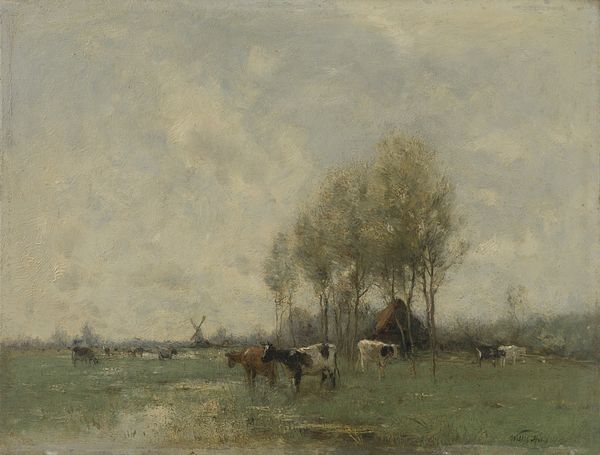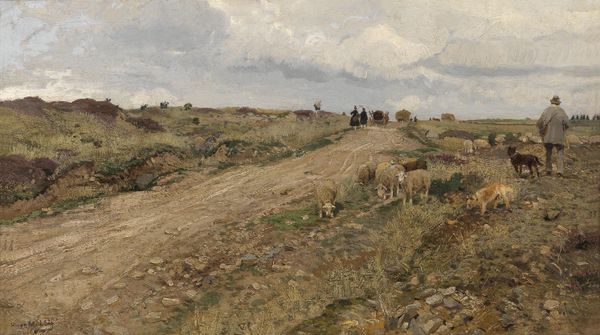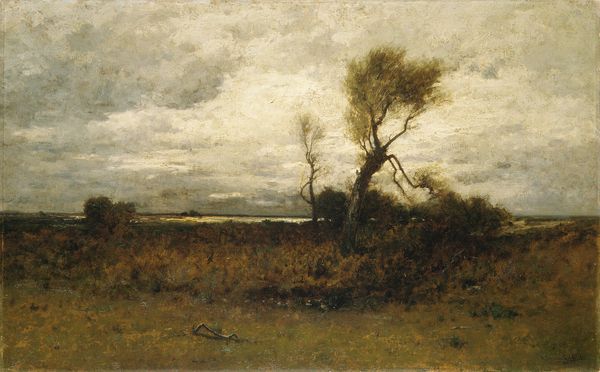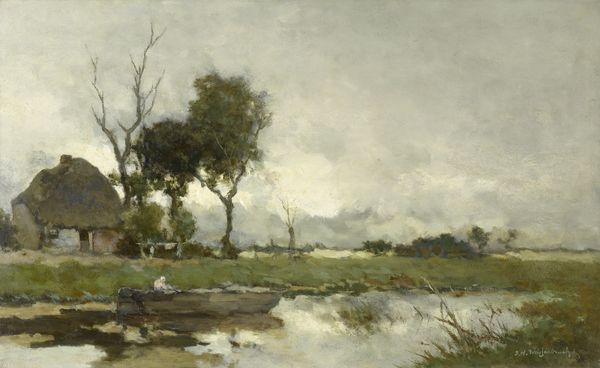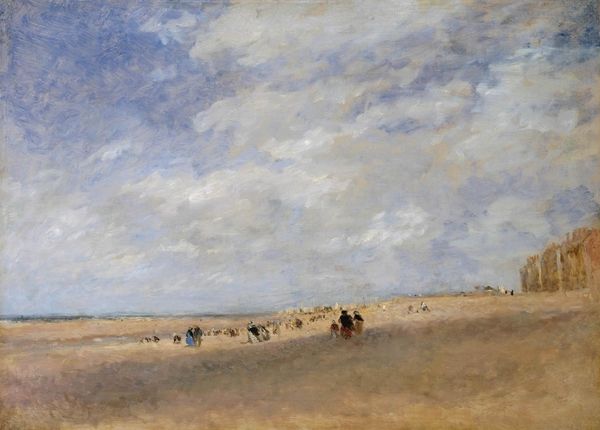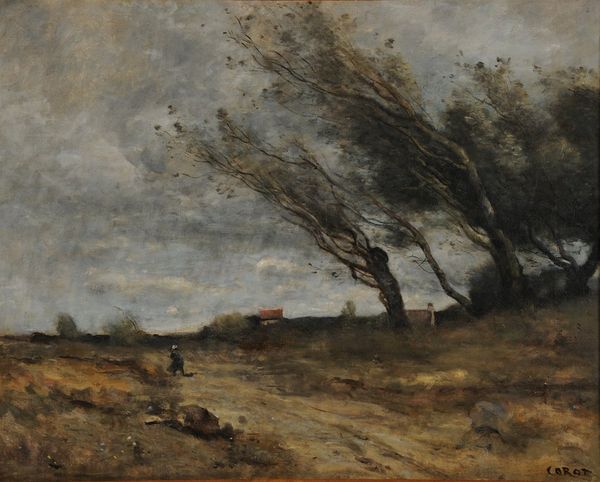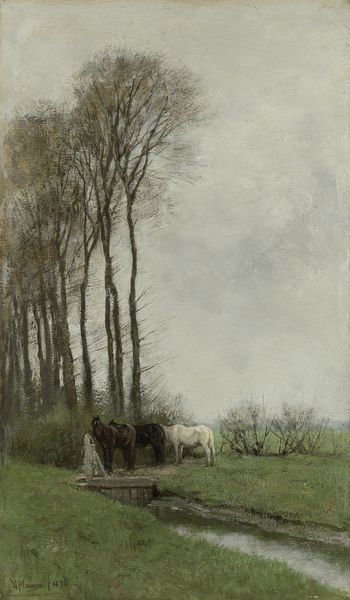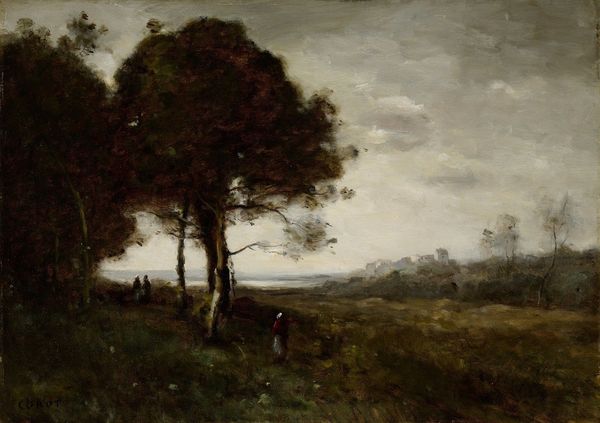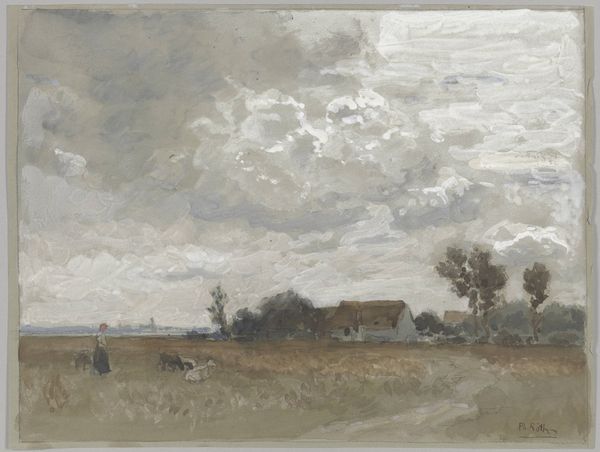
plein-air, oil-paint
#
impressionism
#
plein-air
#
oil-paint
#
landscape
#
charcoal drawing
#
oil painting
#
genre-painting
#
realism
Dimensions: height 77 cm, width 104 cm, height 118 cm, width 145.5 cm, depth 14.5 cm
Copyright: Rijks Museum: Open Domain
Curator: Before us, we have Anton Mauve's "On the Heath near Laren," an 1887 oil painting, a genre scene rendered with the open-air approach that marks much of impressionist painting. What do you see? Editor: My initial reaction is of muted tranquility. The color palette is wonderfully subdued, primarily earth tones and greys. There's a tangible stillness in the air, yet also a sense of movement in the flock of sheep and the ruts of the sandy ground, beautifully achieved with textural paint application. Curator: I'd agree about the tranquility; I think it reflects a key tenet of nineteenth-century Dutch painting: its representation of rural life and labor. Mauve captures the symbiotic relationship between humanity and the land, though this isn't some romantic pastoral ideal. It reflects, instead, the day-to-day realities and demands of working the land. This scene is also painted during a time of great social change with the beginnings of industrialisation and urban expansion. What do you see in relation to such changes? Editor: Interesting point, though, speaking formally, I’m drawn to the spatial organization. The converging lines of the path lead the eye into the center, emphasizing the flock of sheep, yes, but what effect has the tonality? The gradations of color subtly distance objects while the atmospheric perspective contributes to the sense of depth. It feels so tangible to the viewer. Curator: And that, to me, speaks to the changing relationship people were forging with both place and artistic convention at this time. As the world changed, it altered perceptions; this painting is therefore an expression of, say, the rise of individualized mobility and simultaneous communal engagement, manifested through an artistic style rejecting earlier historical grand narratives of academic realism in favor of intimate personal observation of everyday life. Editor: I see it a little differently, although, I can also appreciate your take on societal changes. For me it speaks more to Mauve's ability to distil light. Look at how it bathes the sheep—so lifelike. In its formal language, it also resonates with Corot, Courbet and Daubigny. I believe what Mauve seeks to portray goes much further, seeking perhaps, as Baudelaire might say, to distill modern experience. Curator: And distilling it is the social work of artists; capturing and critiquing social and political moments for the ages! Editor: A point well made, though perhaps one can find a way of blending our individual interpretations so that formal appreciation doesn't have to stand apart from contextualization, rather they become two ways of seeking greater insight into understanding both the art, the artist, and its connection with the present.
Comments
rijksmuseum about 2 years ago
⋮
From 1882 Mauve painted in Laren, a village located in barren heathlands, with only the occasional tree and shrub. Flocks of sheep on the heath were a popular subject. In his atelier Mauve incorporated the studies he had made en plein air into large compositions. These were popular on the English and American markets. His name became synonymous with ‘sheep paintings’.
Join the conversation
Join millions of artists and users on Artera today and experience the ultimate creative platform.
